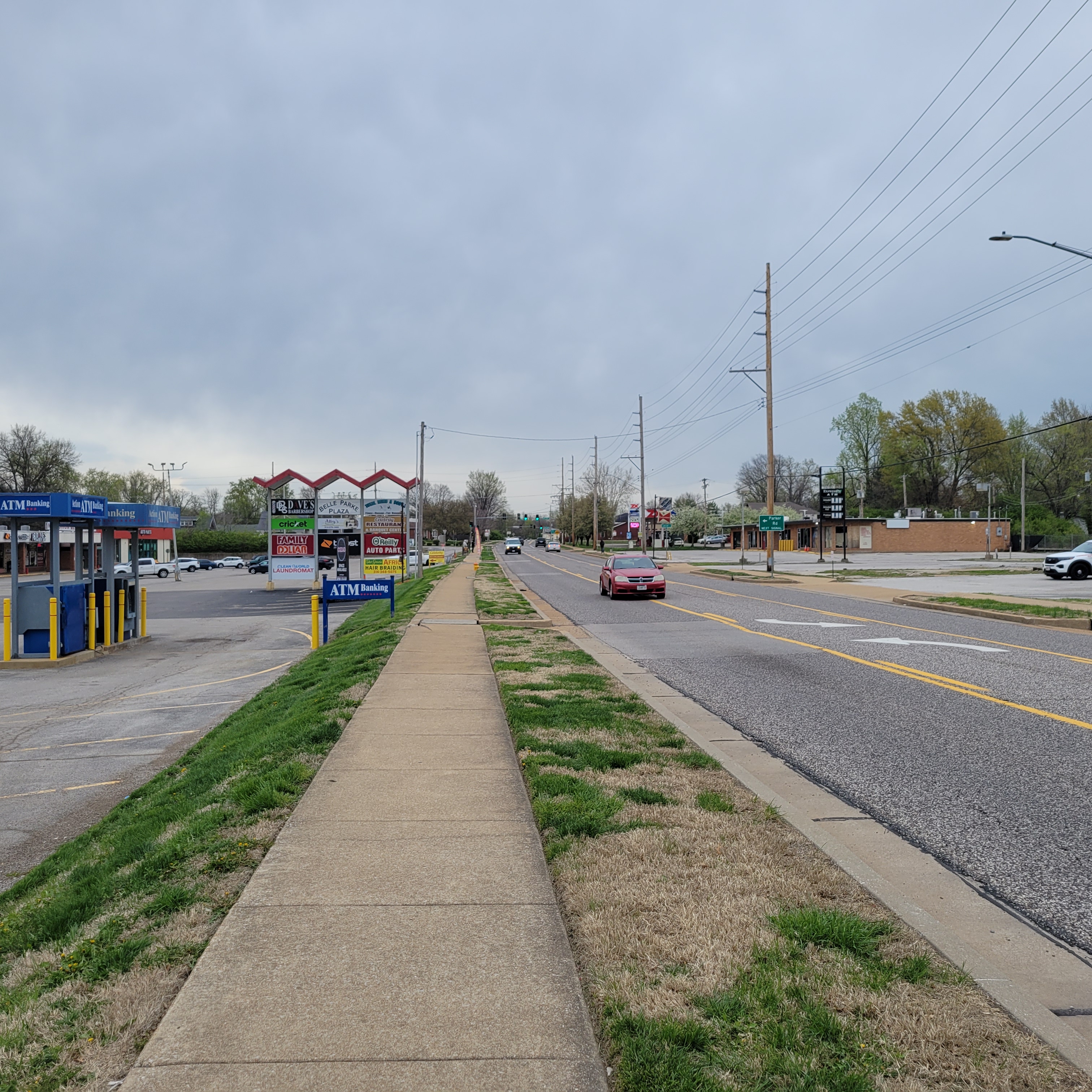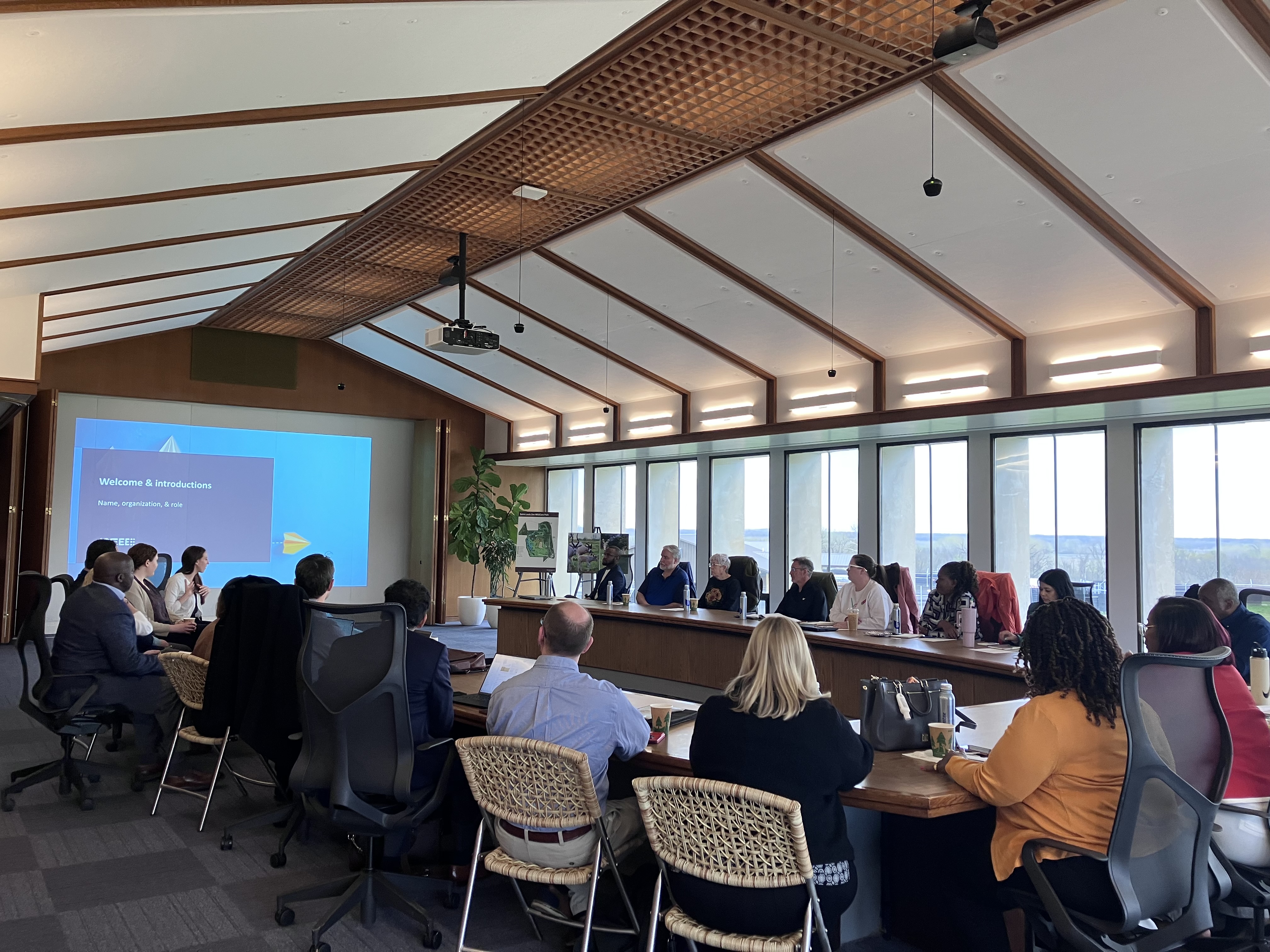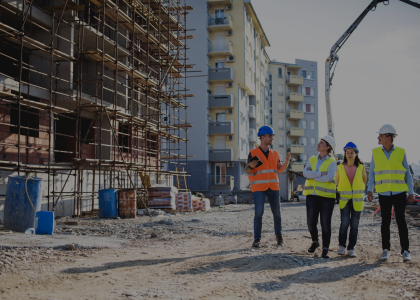A summary of ACEEE’s work with St. Louis County, MO, through the U.S. Department of Transportation Thriving Communities Technical Assistance Program.
View additional case studies:
Lansing, Michigan | Lima, Ohio | Sumter, South Carolina
Learn more about ACEEE as Capacity Builder for U.S. Department of Transportation Thriving Communities Program
About the Thriving Communities Program
The Thriving Communities Program (TCP), a U.S. Department of Transportation technical assistance initiative, is designed to support under-resourced communities in overcoming barriers to planning, funding, and implementing projects and initiatives that will expand affordable transportation options, reduce pollution, improve public health, support job creation, and achieve other community goals. Communities were selected to participate through a competitive application process. ACEEE was selected as part of a capacity builder team to provide technical assistance and worked closely with four communities across 2023–2025.
Overview of St. Louis County
As of 2023, St. Louis County is home to about 987,000 residents, down from more than one million as of the 2020 census.1 Population decline is an ongoing struggle for both the County and neighboring City of St. Louis, which lies entirely outside of county lines. In St. Louis County, 88 distinct municipal governments, ranging in population from less than 100 to more than 50,000, contribute to the area’s deep political fragmentation.2 A long history of racial segregation in the region has led to large discrepancies in income and quality of life between white and Black residents, with communities in northern St. Louis County (“North County”) suffering from historic disinvestment and underfunded public services.
However, a major upcoming new development slated for North County, the 400+ acre expansion of the St. Louis Zoo, dubbed “WildCare Park,” is anticipated to act as a catalyst for economic revitalization in this area. Over the course of TCP, representatives from St. Louis County, the City of St. Louis, and the St. Louis Economic Development Partnership—the TCP core team for St. Louis—convened regularly to advance a workplan focused on ensuring that North County communities can access and benefit from this new civic destination in an equitable, safe, and resilient way.
TCP Initiatives
- Maude Bauschard Trost, senior project manager, St. Louis Economic Development Partnership
WildCare Park is set to open in the Spanish Lake community, an unincorporated area in North County, in 2027, bringing with it an anticipated $660 million impact on the regional economy over the next decade. The WildCare Park site is located on the outskirts of the county, accessed by two-lane county roads that are subject to flooding and that lack public transit or greenway facilities. The new zoo is designed to provide a wild habitat and large dedicated conservation center for endangered species. It is in a low-density agricultural area, but the neighboring Spanish Lake community is just two miles from WildCare Park’s main entrance and is poised to be an epicenter of WildCare Park’s regional impact.
Given this context, the TCP core team was interested in exploring how to advance the Spanish Lake community’s adopted vision for growth, the 2021 Spanish Lake Town Center Master Plan, while also expanding on the scope of that vision to enhance the resilience of the area’s transportation network. ACEEE worked with the team to examine resilience and multimodal improvements to Riverview Drive, a county collector road serving the site from nearby I-270; assess quick and low-cost improvements to the main commercial corridor of the Spanish Lake Town Center, Bellefontaine Road; and facilitate essential conversations about project phasing, financing, and implementation.
Key takeaways/insights
|
Exploring resilience and multimodal improvements to Riverview Drive
Riverview Drive is one of two county roads that leads to the park entrance. Given its low-lying location and proximity to the Mississippi River floodplain, Riverview Drive currently floods during major rain events, sometimes to the extent that the corridor becomes impassable. There are no facilities on Riverview Drive for non-motorized travelers, even though the St. Louis Riverfront Trail, a major greenway facility for the region, follows Riverview Drive south of I-270 and currently terminates just 2.5 miles from the entrance to WildCare Park.
Stakeholders gather in April 2025 to review recommendations for Riverview Drive prepared through the Thriving Communities Program. Image credit: STL Partnership.
Strategic planning for improvements to this corridor in advance of the opening of WildCare Park was a major focus of TCP activities. ACEEE oversaw a corridor study led by a local planning and engineering firm that assessed major challenges for resilience and multimodal access for the road and proposed a set of recommendations, with high-level cost estimates, for future improvements that can mitigate these challenges.
In April 2025, ACEEE also convened representatives from nearly a dozen local public agencies and community organizations to review initial recommendations for Riverview Drive. During this convening, ACEEE facilitated a conversation between local stakeholders with differing perspectives on future priorities for transportation improvements, offering clarity and expert insights on navigating planning challenges in a large region, where resilience improvements for one section of Riverview Drive are just one of many needs competing for funding from a limited transportation budget.
Coming out of this conversation, and with additional insight from ACEEE research on transportation financing mechanisms, local stakeholders gained a common understanding of this planning context and were better prepared to engage in conversations with elected officials and philanthropic organizations about creative ways to unlock new revenue for transportation improvements in Spanish Lake.
Supporting implementation of the Spanish Lake Town Center Master Plan
TCP also provided an opportunity for local partners to revisit the 2021 Spanish Lake Town Center Master Plan with a fresh perspective on how to implement its vision through an incremental, coordinated approach. ACEEE conducted a detailed review of the plan with an eye toward implementation and made recommendations for low-cost, quick, and impactful improvements to Bellefontaine Road, the heart of the Town Center district.

A view looking north on Bellefontaine Road at the town center. Image credit: ACEEE
ACEEE facilitated an important and productive conversation with the St. Louis County Department of Public Works transportation division and the St. Louis County Planning Department to review these opportunities. As an outcome of this meeting, County officials agreed to pilot demonstration projects testing a selection of these solutions on Bellefontaine Road in conjunction with an upcoming small area study planning process for Spanish Lake. These improvements will lay the groundwork for future land use updates that align with the plan’s vision for “holistic redevelopment.” From access management policies and installation of high-visibility mid-block crosswalks to wayfinding signage and opportunities for placemaking3 and public art, these low-cost interventions will transform Bellefontaine Road, spur investment, and create a safer and more pleasant pedestrian environment.
Research to support financing and implementation of transportation improvements
Given the need for major projects on Riverview Drive, new public transit services, and short- and long-term upgrades to the Bellefontaine Road Town Center, the transportation improvements for North County that were advanced through the TCP workplan will require dedicated new funding and a coordinated phasing and implementation approach from local leaders. ACEEE conducted a review of potential financing mechanisms available to support these goals, including tax increment financing, state and federal funding, transportation development districts, user fees, and philanthropic contributions.
The St. Louis TCP core team used this research, along with takeaways from the multiagency meetings held during the April 2025 site visit, to chart next steps for ongoing coordination in preparation of WildCare Park’s 2027 opening. As an outcome from TCP, the STL Partnership launched an interdepartmental working group with St. Louis County Planning and St. Louis County Public Works transportation division to maintain coordination on planning and project implementation in Spanish Lake. The working group intends to meet monthly with these leaders and other regional stakeholders to determine next steps for prioritizing and financing new projects in Spanish Lake, working to make the community’s vision for holistic revitalization a reality.
Summary of TCP impact
For the St. Louis TCP core team, one of the most valuable aspects of participation in the Thriving Communities Program was that the program created a forum for regular, sustained coordination among local agencies that have previously struggled with collaboration. Being able to bring together local experts from the City of St. Louis, St. Louis County, and the STL Partnership for regular biweekly calls strengthened the institutional culture of collaboration between these agencies and catalyzed new working relationships that will endure beyond the program.
1 See summarized demographic characteristics for St. Louis County based on 2023 ACS estimates here: https://censusreporter.org/profiles/05000US29189-st-louis-county-mo/
2 In 2019, the Better Together advocacy movement aimed to promote reunification of St. Louis County and the City of St. Louis, but faltered and was ultimately not put up for a public vote. In late 2024, a state lawmaker introduced plans to reinitiate the conversation around a city/county merger.
3 The Project for Public Spaces describes placemaking as a process that “inspires people to collectively reimagine and reinvent public spaces as the heart of every community. Strengthening the connection between people and the places they share, placemaking refers to a collaborative process by which we can shape our public realm in order to maximize shared value.” See https://www.pps.org/article/what-is-placemaking for additional details.




